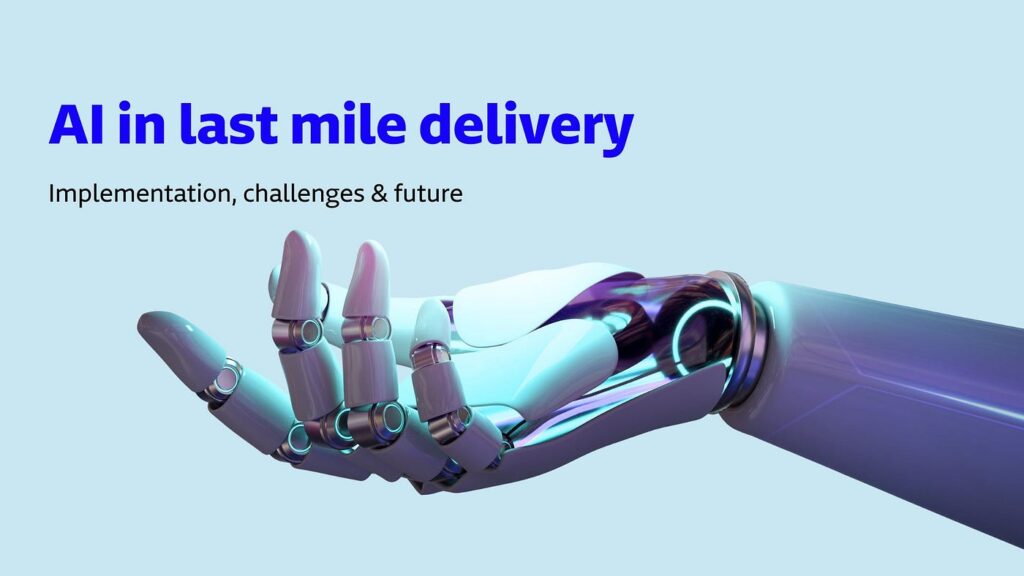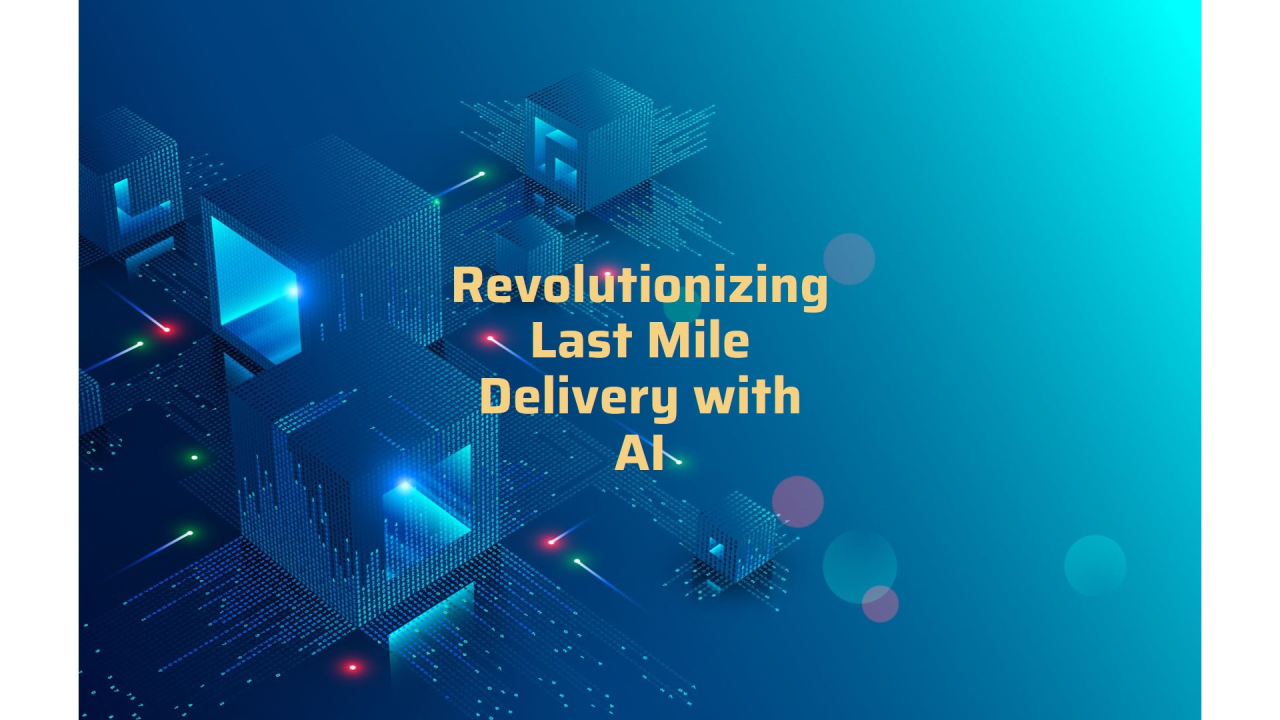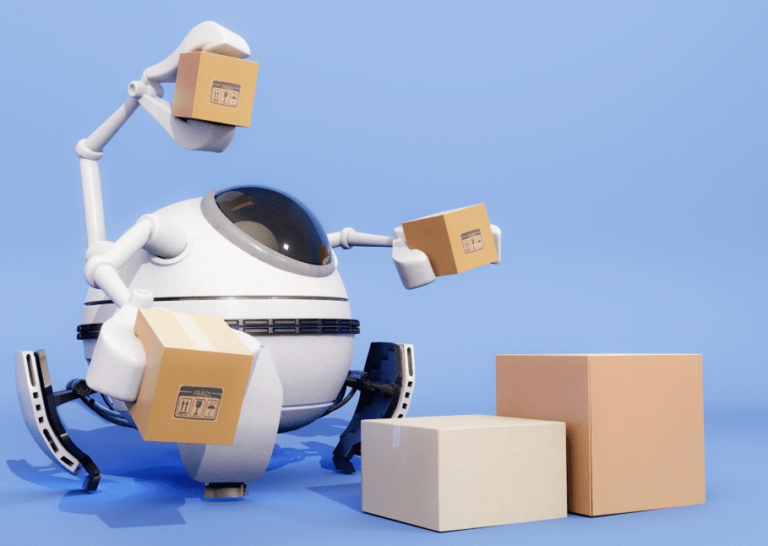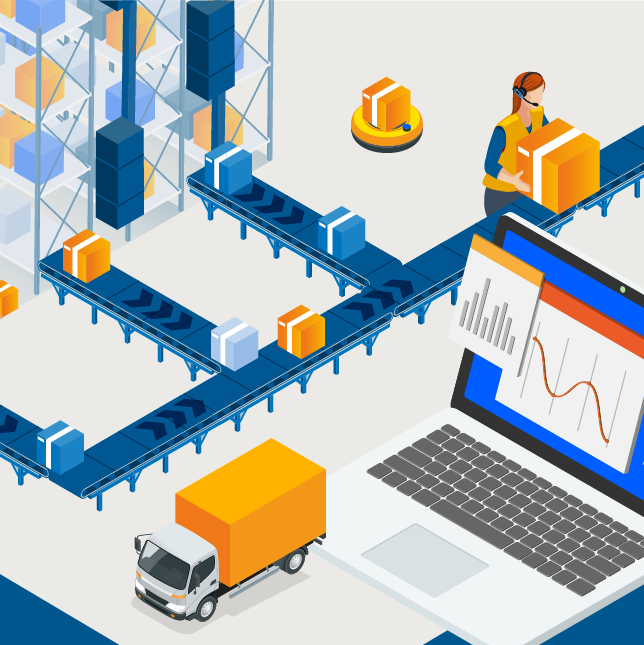Revolutionizing Last Mile Delivery with AI and Automation
- Why WMSOne Stands Out In Warehouse Management - December 30, 2024
- The Future of Warehouse Inventory Management in 2025 - December 9, 2024
- Cold Storage Warehouse: Keeping Food Fresh And Safe - October 3, 2024
Overview:
In the world of e-commerce, last mile delivery with AI—the final, crucial step where goods are transported from a distribution center to the end customer—presents immense challenges and opportunities. Inefficiencies in this stage can escalate costs, sour customer satisfaction, and create operational nightmares. This case study explores how WMSOne Solutions harnessed the power of AI and automation to transform their last mile delivery operations, achieving spectacular improvements in efficiency, cost reduction, and customer delight.

The Challenge
WMSOne Solutions faced a myriad of challenges in their last mile delivery operations with AI, which significantly impacted their overall performance and customer satisfaction.
1. Sky-High Delivery Costs:
- Inefficient Routing: Traditional routing methods often led to longer routes, excessive mileage, and unnecessary detours, all of which inflated fuel consumption and vehicle maintenance costs.
- Fuel Costs: Rising fuel prices added to the burden, making it crucial to find ways to minimize fuel usage through more efficient route planning.
- Labor Costs: Manual dispatching and planning required a considerable workforce, leading to high labor expenses. Additionally, overtime costs increased due to unpredictable delivery times and routes.
2. Customer Frustration:
- Delivery Delays: Unoptimized routes and traffic congestion often caused delays, leading to missed delivery windows and unsatisfied customers.
- Inaccuracies: Errors in delivery addresses, lost packages, and incorrect orders resulted in a high rate of return shipments and customer complaints.
- Lack of Communication: Customers were often left in the dark about their delivery status, with no real-time updates or communication channels to resolve issues promptly.
3. Operational Chaos:
- Manual Planning: The reliance on manual processes for planning and dispatching was time-consuming and prone to human error. Planners had to sift through vast amounts of data to create delivery schedules, often leading to suboptimal routing decisions.
- Dispatching Challenges: Assigning delivery tasks manually was inefficient and led to uneven workload distribution among drivers. This resulted in some drivers being overburdened while others were underutilized.
- Resource Wastage: Inefficiencies in planning and execution led to wasted resources, including fuel, time, and labor, further straining the company’s finances and operational capabilities.
The Game-Changing Solution
To overcome these hurdles, WMSOne Solutions embarked on a trailblazing digital transformation, focusing on AI-driven optimization and automation. The key components of their solution included:
- AI-Powered Route Optimization:
- Implemented machine learning algorithms to analyze historical delivery data, traffic patterns, and real-time road conditions.
- Developed dynamic routing systems that adjusted delivery routes in real-time, finding the shortest and fastest paths.
- Automated Dispatching and Tracking:
- Deployed automated dispatching software that assigned delivery tasks to drivers based on real-time availability and proximity.
- Integrated GPS tracking and IoT sensors in delivery vehicles to monitor their locations and conditions, ensuring timely updates to both the company and customers.
- Customer-Centric Delivery Management:
- Launched a user-friendly mobile app that allowed customers to track their deliveries in real-time, communicate with drivers, and provide specific delivery instructions.
- Introduced flexible delivery options, such as time-slot selections and alternative pickup locations, to enhance customer convenience.
Implementation
The transformation journey included:
- Data Collection and Analysis:
- Gathered extensive data on delivery times, routes, and customer preferences.
- Analyzed this data using AI algorithms to identify patterns and areas for improvement.
- Seamless Technology Integration:
- Partnered with tech experts to integrate AI and automation tools into their existing logistics infrastructure.
- Conducted rigorous testing and simulations to ensure system reliability and accuracy.
- Comprehensive Training and Rollout:
- Provided extensive training to drivers and dispatchers on using the new systems.
- Rolled out the solution in phases, starting with a pilot program in a major city before scaling to other regions.
Stunning Results
The impact of AI and automation on WMSOne Solutions’ last mile delivery was phenomenal:
- Dramatic Cost Reduction: Delivery costs plummeted by 30%, thanks to optimized routing and reduced fuel consumption.
- Boosted Efficiency: Delivery times improved by 25%, with a significant reduction in missed or delayed deliveries.
- Skyrocketing Customer Satisfaction: Customer complaints dropped by 40%, and overall satisfaction ratings soared, thanks to real-time tracking and flexible delivery options.
- Scalable Operations: The automated systems allowed WMSOne Solutions to scale their operations smoothly, handling increased order volumes without compromising on delivery performance.
Conclusion
WMSOne Solutions’ strategic adoption of AI and automation revolutionized their last mile delivery process. By tackling critical pain points and leveraging cutting-edge technology, they not only enhanced operational efficiency and cost-effectiveness but also significantly improved customer experience. This case study underscores the transformative potential of AI and automation in the logistics industry, setting a high benchmark for other companies aiming to excel in the fiercely competitive e-commerce landscape.







